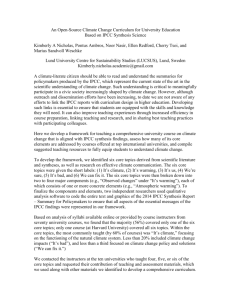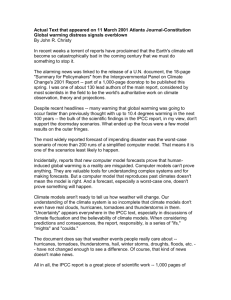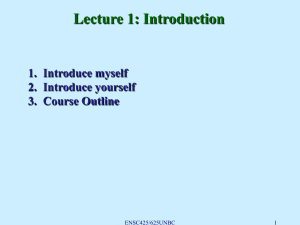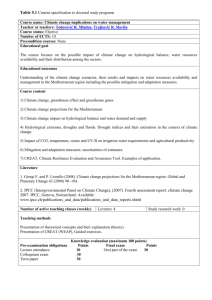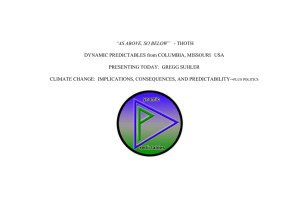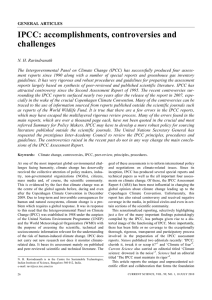Intergovernmental Panel on Climate Change (IPCC): 4 Assessment Report
advertisement
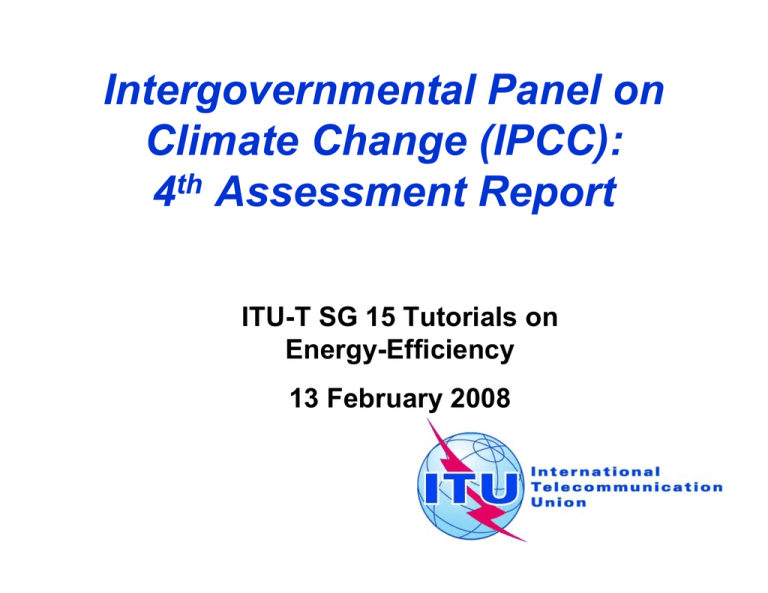
Intergovernmental Panel on Climate Change (IPCC): th 4 Assessment Report ITU-T SG 15 Tutorials on Energy-Efficiency 13 February 2008 IPCC and Al Gore: Joint Recipients on the 2007 Nobel Peace Prize “The IPCC’s strength lies in the processes and procedures that it follows. Most important is its ability of carrying out rigorous scientific assessment, which undergoes the scrutiny of government representatives and therefore is accepted by governments. There is no other body in the world that is able to meet these twin objectives simultaneously,” 2 IPCC 4th Assessment Reports z Synthesis report released Nov 2007 (ahead of UN Climate Change Conference in Bali) ¾ WP1 report: Physical Science basis ¾ WP2 report: Impacts, adaptation and vulnerability ¾ WP3 report: Mitigation of climate change z 2’500 scientific reviewers, 800 contributing authors, 450 lead authors from 130+ countries z Previous work ¾ 1988: IPCC established. Secretariat hosted by WMO and & UNEP ¾ Previous assessment reports in 1990, 1995 and 2001 ¾ UN Framework Convention on Climate Change (UNFCCC) 3 adopted in 1992 Evidence for climate change 4 Rise in the production of greenhouse gases z Global atmospheric concentration of gases has increased markedly as a result of human activities z In 2005, the concentration of CO2 exceeded, by far, the natural level over the last 650’000 years 5 Total Greenhouse Gases (in Gigatonnes of Carbon Dioxide equivalents – GtCO2-eq) Ranges for predicted global surface warming 6 Multi-model averages Countries most at risk from climate change Drought Flood Storm Coastal (<1m)a Coastal (<5m)a Agriculture Malawi Bangladesh Philippines All low-lying island states All low-lying island states Sudan Ethiopia China Bangladesh Vietnam Netherlands Senegal Zimbabwe India Madagascar Egypt Japan Zimbabwe India Cambodia Vietnam Tunisia Bangladesh Mali Mozambique Mozambique Moldovab Indonesia Philippines Zambia Niger Lao PDR Mongoliab Mauritania Egypt Morocco Mauritania Pakistan Haiti China Brazil Niger Eritrea Sri Lanka Samoa Mexico Venezuela India Sudan Thailand Tonga Myanmar Senegal Malawi Chad Vietnam China Bangladesh Fiji Algeria Kenya Benin Honduras Senegal Vietnam Ethiopia Iran Rwanda Fiji Libya Denmark Pakistan 7 World Bank. Note: Countries shaded in yellow are Least Developed Countries. Source: Economic mitigation potential by Sector, 2030 What happens next? z Kyoto Protocol, 1997, set limitations and reduction targets for developed countries ¾ Commitments due in 2008-2012, but likely to be too little, too late, and may not even be met z Bali conference, Dec 3-14 2007 ¾ Reached agreement on set of milestones for agreeing post-Kyoto limitations/reductions by 2009 ¾ IPCC 4th assessment report adopted as scientific basis ¾ Agreement on Reduced Emissions from Deforestation and forest Degradation (REDD) ¾ BUT, no agreed language on reductions of 25-40% below 1990 levels by 2020 (IPCC proposal) z 9Next major conference: Poznan, December 2008 Thank You For information, see: www.ipcc.ch Full IPCC report can be downloaded from: http://www.ipcc.ch/ipccreports/ar4syr.htm 10
